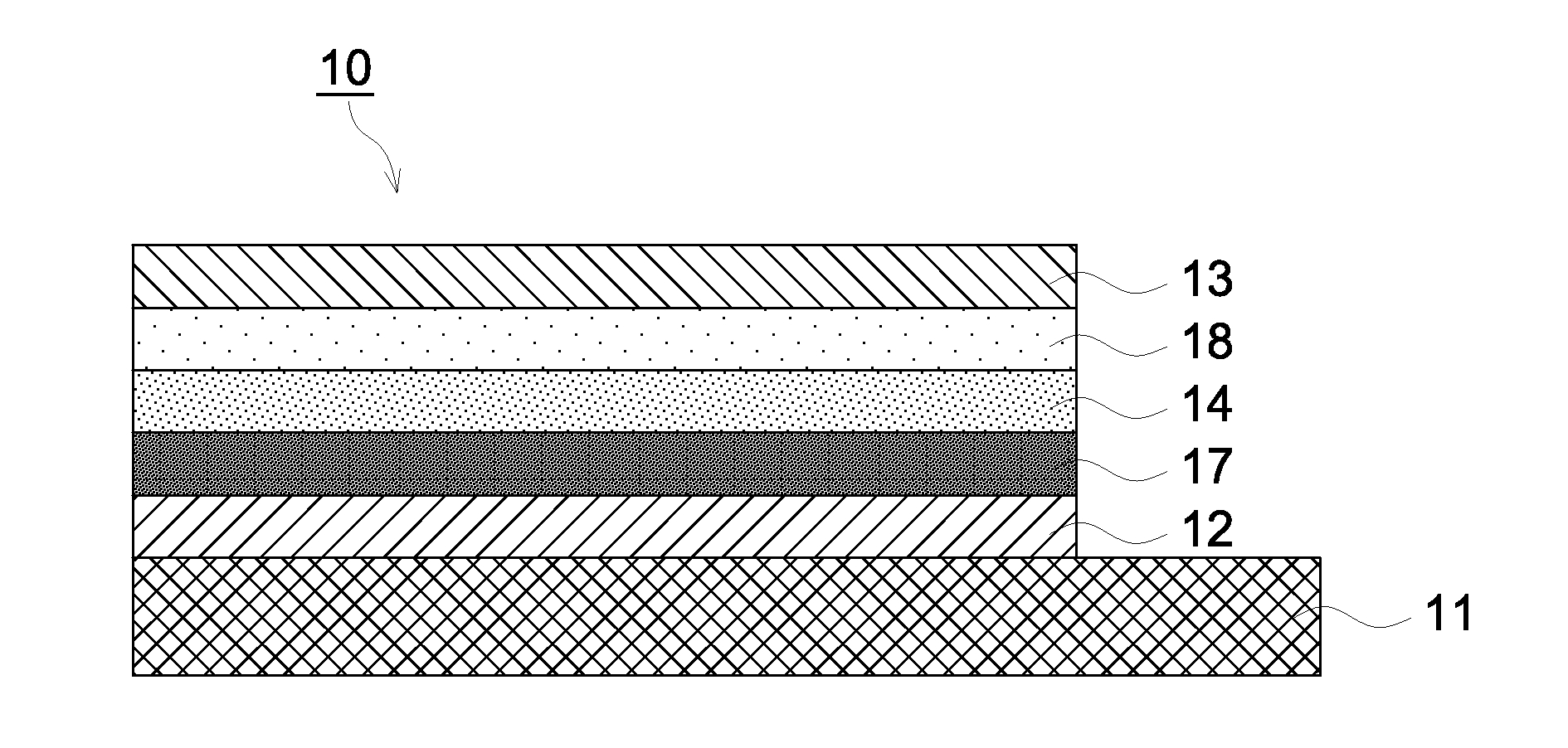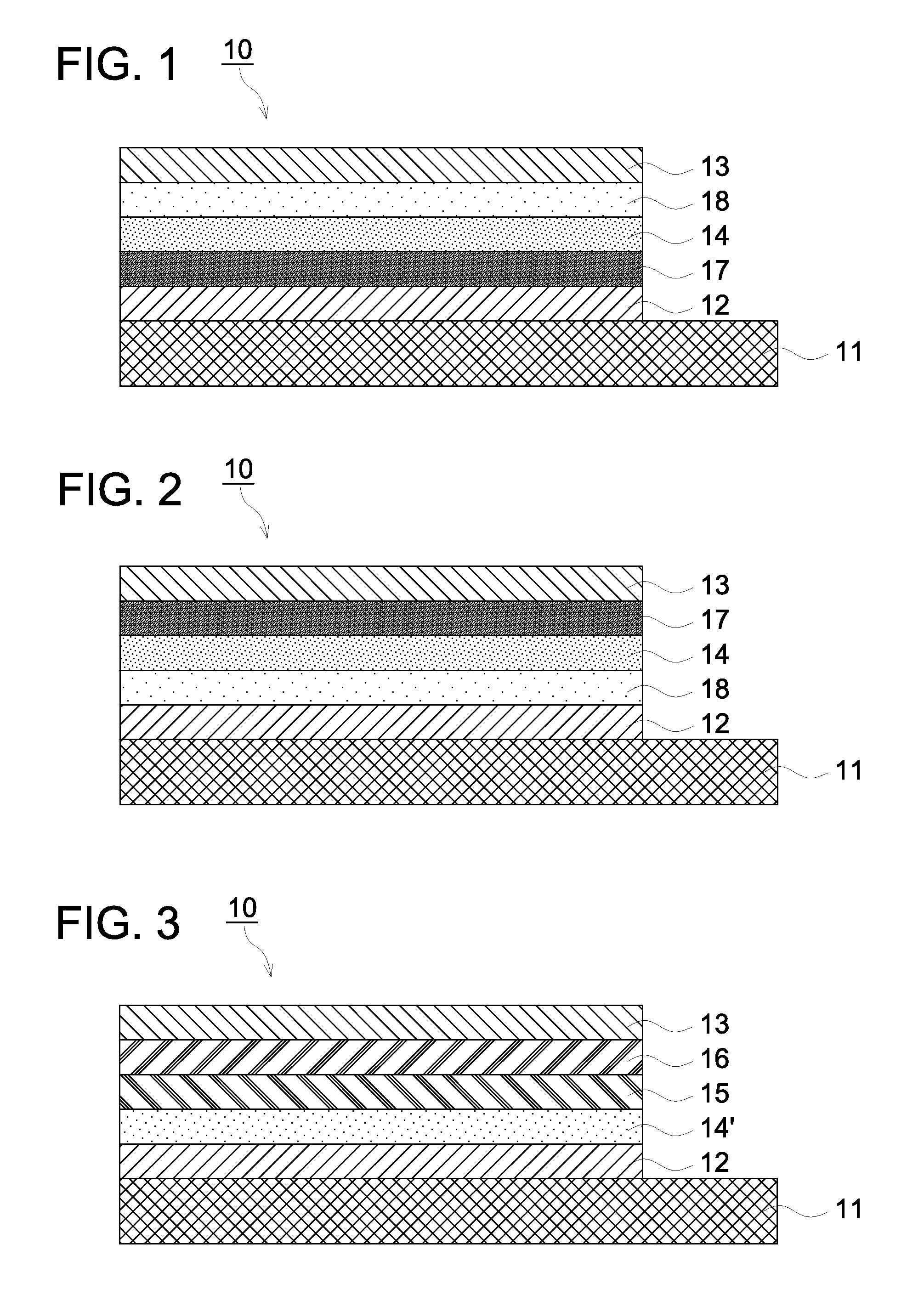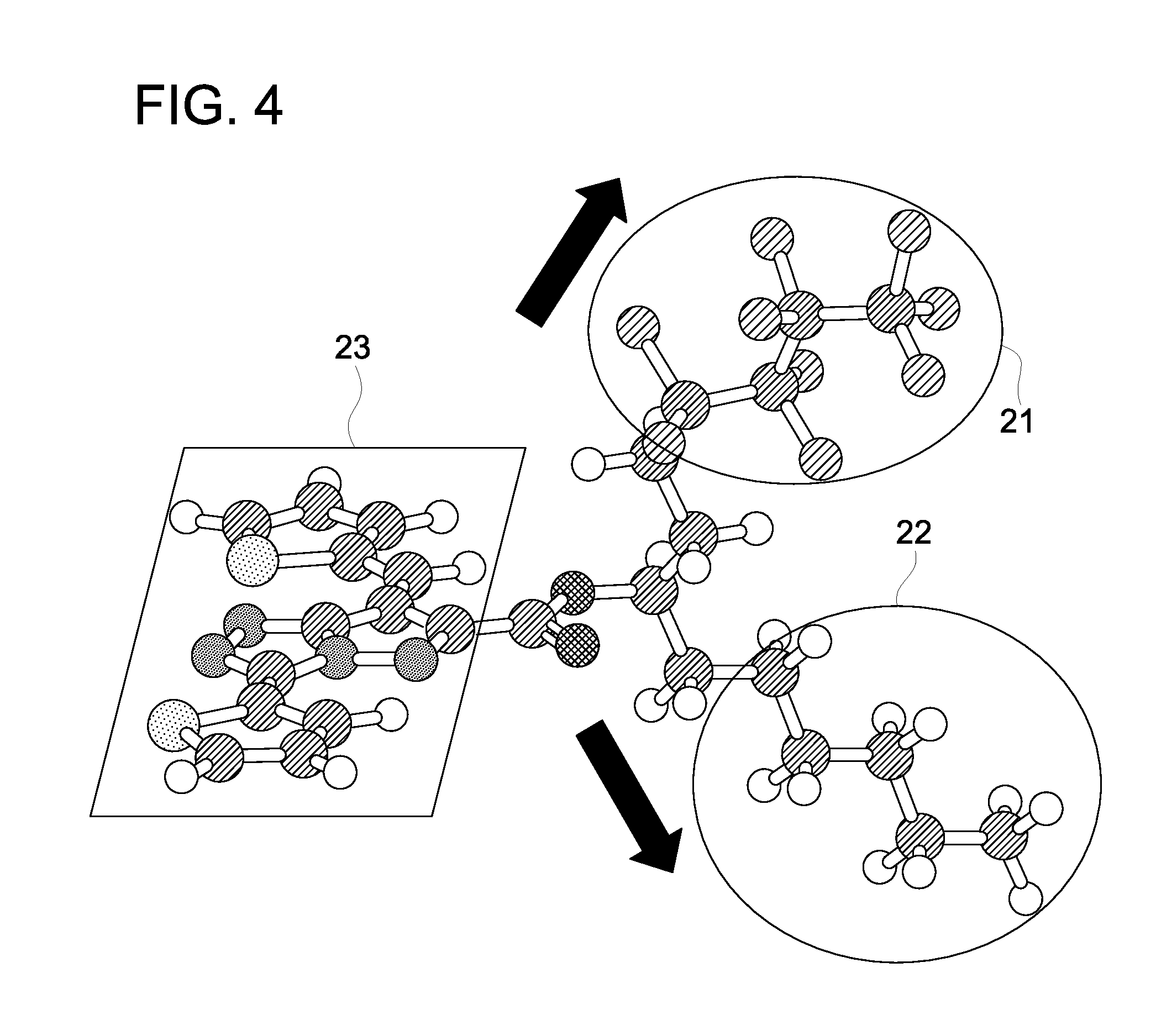Organic photoelectric conversion element and solar cell using same
- Summary
- Abstract
- Description
- Claims
- Application Information
AI Technical Summary
Benefits of technology
Problems solved by technology
Method used
Image
Examples
example 1
[Preparation of Organic Photoelectric Conversion Element 1]
[0158]With referring to Non-Patent Document 4, Organic photoelectric conversion element 1 of a forward layer structure in which the n-type organic semiconductor material had a concentration gradient as prepared. Only in Organic photoelectric conversion element 1, the first electrode was used as the anode and the second electrode was used as the cathode.
(Formation of the First Electrode)
[0159]A transparent conductive film made of indium tin oxide (ITO) was deposited on a substrate composed of PEN to have a thickness of 150 nm. By using a usual photolithography technique and hydrochloric acid etching, a transparent electrode having a pattern of 2 mm width was formed to obtain an anode (the first electrode).
[0160]The aforementioned anode which had been subjected to pattern formation was successively cleaned by: ultrasonic cleaning using a surfactant and ultrapure water, and finally ultrasonic cleaning with ultrapure water. Then...
example 2
Evaluation of Formation of Hole Transport Layer on Photoelectric Conversion Layer
(Preparation of Organic Photoelectric Conversion Element 12″)
[0187]Organic photoelectric conversion element 12″ was prepared in the same manner as the preparation of Organic photoelectric conversion element 12 except that the coating of hole transport layer was carried out in a glove box (a nitrogen atmosphere in which oxygen concentration was 10 ppm or less and the dew point was −70° C. or lower), but not in an ambient atmosphere, via a gravure coating method which is more probable in a practical production process.
[0188]However, in the extremely dried atmosphere in the glove box, the aqueous solvent in the hole transport layer was repelled and film formation of S three sheets among prepared 5 sheets of organic photoelectric conversion element were unsuccessful.
(Preparation of Organic Photoelectric Conversion Element 15″)
[0189]Organic photoelectric conversion element 15″ was prepared in the same manner...
PUM
| Property | Measurement | Unit |
|---|---|---|
| Fraction | aaaaa | aaaaa |
| Fraction | aaaaa | aaaaa |
| Fraction | aaaaa | aaaaa |
Abstract
Description
Claims
Application Information
 Login to View More
Login to View More - R&D
- Intellectual Property
- Life Sciences
- Materials
- Tech Scout
- Unparalleled Data Quality
- Higher Quality Content
- 60% Fewer Hallucinations
Browse by: Latest US Patents, China's latest patents, Technical Efficacy Thesaurus, Application Domain, Technology Topic, Popular Technical Reports.
© 2025 PatSnap. All rights reserved.Legal|Privacy policy|Modern Slavery Act Transparency Statement|Sitemap|About US| Contact US: help@patsnap.com



